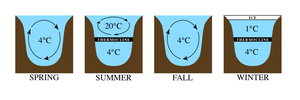Most papers on climate science take pages and pages of exposition before they try to make any kind of point. The excessive verbiage exists to rationalize their limited understanding of the physics, typically by explaining how complex it all is.
Conversely, think how easy it is to explain sunrise and sunset. From a deterministic point of view [1] and from our understanding of a rotating earth and an illuminating sun, it’s trivial to explain that a sunrise and sunset will happen once each per day. That and perhaps another sentence would be all that would be necessary to write a research paper on the topic … if it wasn’t already common knowledge. Any padding to this would be unnecessary to the basic understanding. For example, going further and explaining why the earth rotates amounts to answering the wrong question. Thus the topic is essentially an elevator pitch.
If sunset/sunrise is too elementary an example, one could explain ocean tides. This is a bit more advanced because the causal connection is not visible to the eye. Yet all that is needed here is to explain the pull of gravity and the orbital rate of the moon with respect to the earth, and the earth to the sun. A precise correlation between the lunisolar cycles is then applied to verify causality. One could add another paragraph to explain how mixed tidal effects occur, but that should be enough for an expository paper.
We could also be at such a point in our understanding with respect to ENSO and QBO. Most of the past exposition was lengthy because the causal factors could not be easily isolated or were rationalized as random or chaotic. Yet, if we take as a premise that the behavior was governed by the same orbital factors as what governs the ocean tides, we can make quick work of an explanation.








 For example, the
For example, the 


